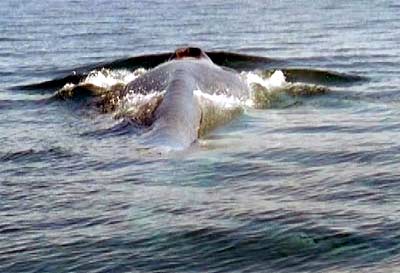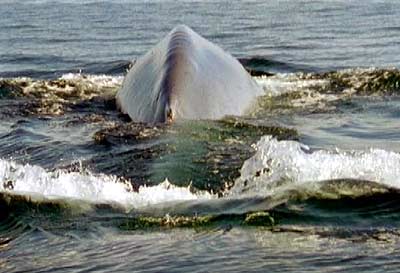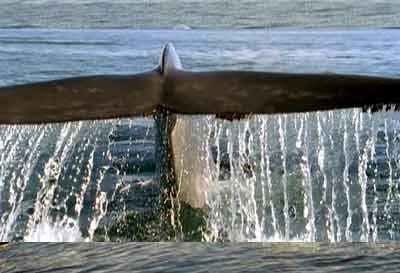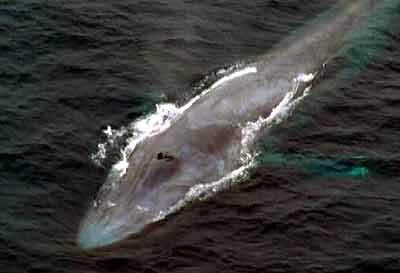 |
|
In the Greater Caribbean — comprising some 23
island nations and overseas territories of France, Britain and the
Netherlands — whale watching is still a fairly new idea. Begun in southern California in 1955,
commercial whale watching did not spread to the Caribbean until the early to mid 1980s with
the development of dolphin watching and swimming tours in the Bahamas and humpback whale
watching off the Dominican Republic. In 1988,
commercial whale watching started up in the eastern Caribbean with tours to see sperm whales and various dolphins
off Dominica. |
Whale watching in the above three countries has
grown steadily and spread to other nations and nearby islands and, by the mid-1990s,
whale watching was attracting visitors in the Turks & Caicos Islands, the US and British
Virgin Islands, Puerto Rico, Martinique, Grenada, and St. Vincent and the Grenadines.
Recently, whale watch tours have also started up in St. Lucia, St. Kitts-Nevis, St.
Barthélemy, and Guadeloupe. Whale watching in the Caribbean occurs by land, air and sea and
on a wide variety of craft; some of the whale watching is actually based more on dolphins
— 'whale watching' is used to mean watching any of the 81 species of cetaceans.
However, despite the great diversity of platforms and species watched, and the continual
expansion to new islands, whale watching in the Caribbean, has grown
more slowly than expected and has had some growing pains, particularly in the past 5
years.
|
| In 1998, an estimated 39,000 people went whale
watching in the Greater Caribbean. Estimated total revenues were nearly
$10 million (£6.2 million UK). Based on the numbers of whale watchers, the
average annual increase between 1994 and 1998 was 20.2%. Between 1991 and
1994, whale watch tourism in the region grew much faster — at
113.8% per year. While such a high rate would be unlikely to be sustained beyond the
initial phase in a given area, it is surprising that the annual
increase rate has so declined. |
|
 |
|
Still, 20.2% is almost certainly higher than the
current world growth rate. The world whale watching growth rate from 1991-1994
was 10.3% per year.
In 1994, there were 10 whale watching countries
or island territories in the Caribbean. As of 1999, there are 14 countries and
territories. Several of these countries, such as St. Lucia, Guadeloupe, and the
Turks & Caicos Islands, have seen dramatic increases in whale watching since
January 1999 which are not included in the 1998 whale watching census
figures cited above. The most valuable whale watch industry in the
Caribbean in terms of total expenditures is in the Dominican Republic ($5.2
million USD) followed by the Bahamas ($2.97 million USD). Various problems,
however, have kept the current numbers from expanding to a much greater extent,
despite considerable promise and capacity. Also, a relatively high percentage
of the expenditures in these two countries leak out of and thus do not benefit the
local economy. Whale watching in Dominica now produces a
million dollars US ($970,000 USD) in total revenues, with four operators working
out of the southwest around Roseau attracting the core whale watch income.
This is the third most valuable whale watch industry in the Caribbean, and it
clearly shows the possibilities for the eastern Caribbean in terms of capturing a
much larger portion of the international whale watch market.
|
 |
|
In eight countries or
overseas territories, there are now draft or final regulations or guidelines for whale watching.
This represents
more than half of all the countries or territories that have some
commercial whale watching.
Of the eight places with guidelines or regulations, however,
only two (25%) have the force of law.
Enforcement of whale watch regulations in
the Caribbean, as in most other parts of the world, is almost nonexistent. |
|
Caribbean whale watch operations include some
of the world's most outstanding educational opportunities, such as the Bahamas
Marine Mammal Survey and Wild Dolphin Project in the Bahamas, and Paul
Knapp's whale-listening tours in the British Virgin Islands, among others. These
operations all feature naturalist guides — the key to an excellent whale watch
tour. They offer a mix of education, science, and conservation benefits for
the whales, plus good fun for the participants. These projects draw tourists
from many different countries.
Community-based whale watching has featured at
various locations around the Caribbean. On the west coast of Puerto Rico, the
annual arrival of the humpback whales during the winter provides an exciting
community focus, with numerous land-based whale watchers visiting the Punta
Higuera Lighthouse and spending the day at the park. On the island of Carriacou,
in the Grenadines of Grenada, the educational programme of the Kido Project has a
community basis for some of its activities. In and around the town of Samaná, in
the Dominican Republic, there are new businesses and infrastructure directly
attributable to the increase in visitors during the whale watch season. Community
members have started to improve and extend facilities and to encourage
land-based whale watching as well. Besides Samaná, whale watching is having a
real impact on local economies in such places as Roseau, in Dominica,
and north Bimini, in the Bahamas. The whale watching potential for the Caribbean
ranges from considerable to outstanding in about half of the countries
listed. The overall potential is certainly largely yet to be seen.
|
|
Tourism is the main industry throughout most of
the Greater Caribbean region. For the 23 island nations and territories, in 1997,
there were 15 million visitors arriving by air.
In addition, 10.6 million cruise ship passengers
stopped in one or more ports.
Total tourist expenditures were $13.5 billion USD (CTO 1997). Whale watching is a comparatively
small though growing part of this, but it is arguably a crucial aspect of image
making. .
|
|
 |
Whale Quiz
For those countries that have successful whale
watching tours, the presence of whales and dolphins and the possibility of seeing them can
lend a romantic, natural allure which can feed into existing national images or help create
new ones. If tourism is largely about selling an image, whales and dolphins offer
considerable possibilities. But for this to be successful, attention must be paid to the
educational, scientific, conservation, as well as to the commercial aspects
NEXT |
|